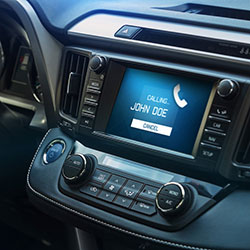
Earlier this year Ontario took one of the most aggressive stances against distracted driving in the country.
The province enacted stiff penalties for drivers caught using smartphones or other handheld devices-a $1,000 fine, three demerit points, and up to three days suspension for violators. A second offence within five years could land drivers a $2,000 fine and a seven-day licence suspension, and additional offences can result in $3,000 fines and 30-day suspensions.
As if those punishments weren't enough, there are also ramifications for auto insurance premiums as well. Annual premiums can jump as much as 25 percent for drivers convicted of a single distracted driving offence.
The harsher penalties against distracted driving penalties beg the question: are they actually having an impact on the number of drivers using devices behind the wheel?
A Look at the Numbers
While it may be a bit too early to say that enhanced penalties for using a hand-held device behind the wheel have led to a major decline in distracted driving, there are some encouraging data that suggests there has been some reduction in the numbers.
Statistics from the Ontario Court of Justice collected from July 2018 to June 2019 show that there were 34,348 charges of driving with a handheld device received. Although it may seem high, the charges laid seem to be declining. For the full calendar year of 2018 there were 40,598 charges received; 46,371 charges were received in 2017; and, 51,210 charges were received in 2016. Keep in mind that the new penalties went into effect in January 2019, so it is hard to gauge how much of a reduction the new penalties have yielded until 2019's full year data is available, but the numbers appear to be moving in the right direction.
On the other hand, a May survey from the Insurance Bureau of Canada found that 75 percent of drivers admitted to distracted driving, even though 90 percent acknowledge a conviction would result in higher insurance premiums. An April study by InsuranceHotline.com also found that:
- 40 percent of motorists make phone calls while driving.
- 41 percent check messages at traffic lights.
- 3 percent watch videos while driving.
The good news is that the InsuranceHotline.com study found that awareness is an effective tool in the fight against distracted driving. When informed that distracted driving results in more death and injuries than driving under the influence, 44 percent of participants pledged to definitely change their behaviour.
Staying Focused Behind the Wheel
The two-pronged approach of stricter penalties and public awareness appear to be making a dent in the numbers of distracted drivers on the road. But the ubiquity of such devices and the irresistible urge to check them constantly make combating distracted driving an ongoing battle for public safety.
If you find it difficult to keep your hands off your device, here are a few tips to help you:
- Lock your phone in your trunk or your glovebox.
- Enable do not disturb or airplane mode on your phone when you are driving.
- Consider practicing mindfulness meditation before you leave to curb smartphone addiction.
- Make a pledge not to use your phone while driving and hold yourself accountable.
If you've been hit with a distracted driving charge be aware that your insurance may go up, which means it may be a good time to shop around for a new carrier. Check out Kanetix.ca to find the best premiums for you.




